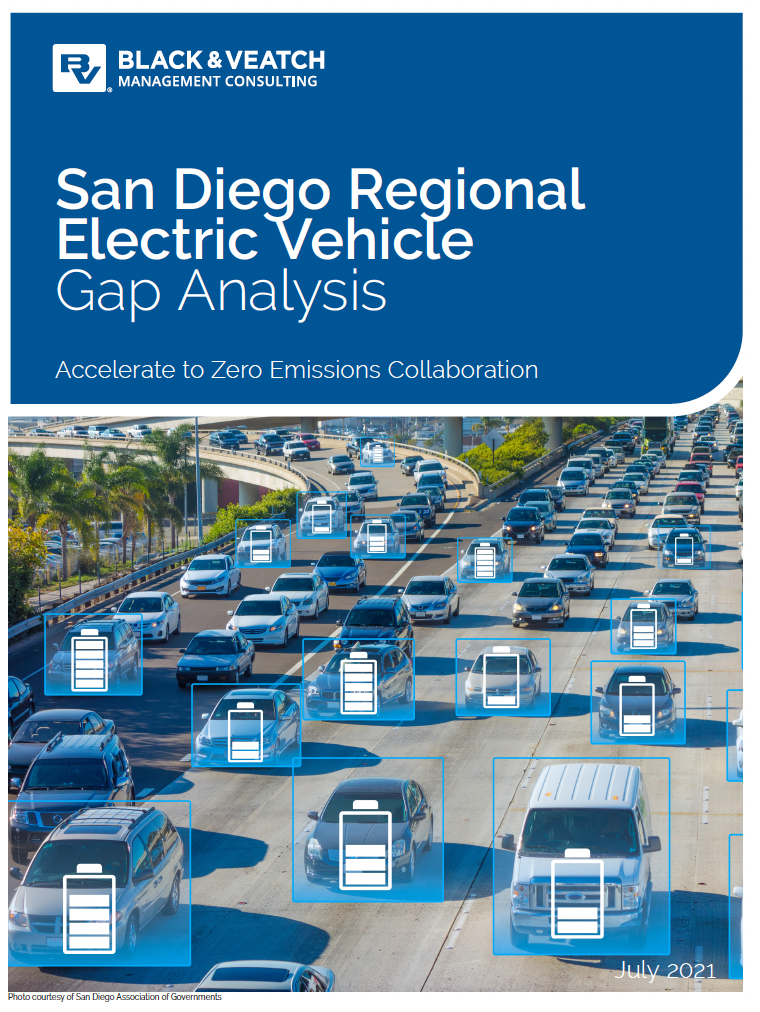THE SAN DIEGO REGIONAL EV GAP ANALYSIS
The San Diego Regional Electric Vehicle Gap Analysis report was developed by Black & Veatch Management Consulting in partnership with S Curve Strategies.
The team worked collaboratively with the Accelerate to Zero Emissions Collaboration, made up of San Diego Gas & Electric, SANDAG, the City of San Diego, the County of San Diego, and many regional stakeholders.
The A2Z Collaboration is comprised of organizations in the San Diego region that are invested in a clean transportation future. The A2Z Collaboration members recognize the importance of regional partnerships to advance transportation electrification to combat air pollution and climate change. The A2Z Collaboration brings together key stakeholders in the region to develop a framework to advance clean transportation equitably.
As a precursor to developing a regional strategy, the A2Z Collaboration engaged Black & Veatch to perform a Regional Electric Vehicle Gap Analysis. BV assembled a team of experts, including S Curve Strategies, to perform this work for the A2Z Collaboration.
To establish a baseline for this gap analysis, the A2Z Collaboration examined the current counts for zero-emission vehicles (ZEVs)and their associated charging and fueling infrastructure. The scope of the gap analysis included ZEVs comprised of battery electric vehicles, plug-in hybrid electric vehicles, and hydrogen fuel cell vehicles, collectively referred to as ZEVs in this report. The number of ZEVs in the San Diego region stood just under 70,000 in 2020. These ZEVs were supported by about 6,500 level 2 and 250 direct current fast chargers. There was also one active hydrogen fueling station identified in the San Diego region as of 2020.
The A2Z Collaboration studied what infrastructure will be required to support statewide executive orders in the San Diego region, including EO N-79-20, which mandates that all passenger vehicles sold in California be zero-emissions by 2035. This gap analysis studied EV charging and hydrogen fueling infrastructure for the San Diego region. BV performed an extensive review of existing programs, incentives, and regional strategies and developed models to estimate ZEV growth in the region and estimate the need for ZEV fueling infrastructure by end-use both in public and private domains.
The A2Z Collaboration and its core members recognize the importance of ensuring that all residents in the region share the same benefits and burdens from climate solutions. This includes historically underserved, systemically marginalized groups impacted by actions and inactions at all levels of government and society.
As such, the ZEV Gap Analysis specifically evaluated ZEV infrastructure gaps and barriers for communities of concern. This additional layer of analysis will facilitate the prioritization of investment into these areas as the region decarbonizes its transportation sector.

